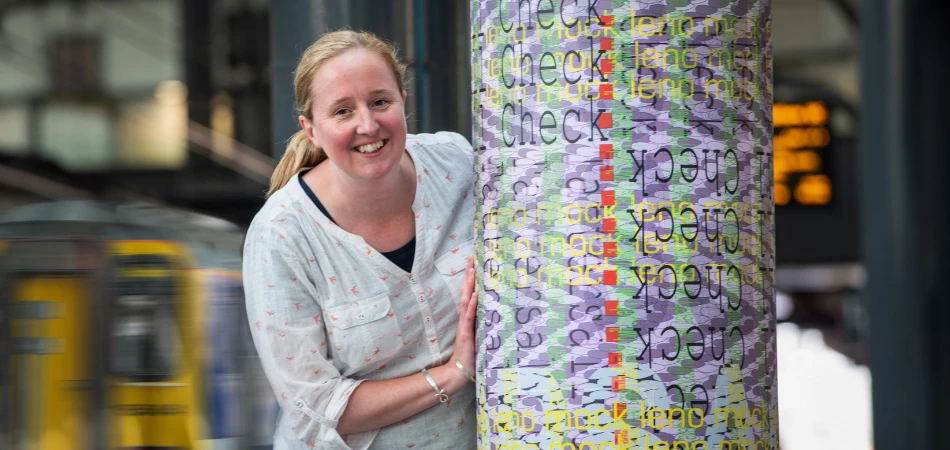
Partner Article
City's rich textile history celebrated at Leeds Station
The rich history of Leeds’ internationally-renowned textile industry is being vividly celebrated at Leeds Station.
Eight colourfully-illustrated panels, inspired by the region’s weaving and textile industry, have been installed on columns on the main platforms at the station. They show different textile weaves layered with quotes of weaving terminology and processes.
The designs have been inspired by the wonderful collection of materials and oral history records from former mill workers from the archives of Sunny Bank Mills, the famous family-owned textile mill in Farsley.
The panels have been created by Elise Liversedge and Mary Hooper as part of their Arts Council-funded touring art project, Last Station.
Rachel Moaby, Archive Curator at Sunny Banks Mills, who guided Elise and Mary’s research, commented: “From my perspective, it was really interesting to see how the artists interpreted the collection from the cloth and weave to the words and stories of the people who worked here.
“This was a wonderful testament not only to the history of Sunny Bank Mills history but also to the textile heritage of Leeds and Yorkshire. It is a stunning celebration of the heritage of textiles.
“I am also very pleased and happy with the part Sunny Bank Mills played in the project and excited by the many thousands of people that will have the opportunity to look and read the art work while passing through Leeds Station,” she added.
Elise Liversedge explained: “Visitors can enjoy these important visual records of when the city was respected around the world for the quality of its textiles, thanks to the generous support of the Network Rail Team at Leeds Station, in particular Station Manager Vinny Burke. We wanted to celebrate the wonderful past of the city and share it with the 144,000 passengers who come through the station every day.”
“Visiting Sunny Banks Mills opened up an inspiring archive of the working life of a family-owned mill founded in 1829 – from tiny weights and measures to an amazing collection of thousands of exquisitely woven Merino wool and Cashmere suit fabrics.
“Alongside the swatches of material samples from the 19th Century to the 1980s, are objects that show a tangible working life of the mill: peg card books, dye testing record books, thread sample books, accounts, ledgers, tools for testing cloth, magnifiers for invisible mending and an additional social history archive to help in understanding the working lives in the mill during the 20th century,” she said.
John Gaunt, joint managing director of Sunny Bank Mills, added: “It has been an honour to help with this high-profile celebration of the city’s rich textile history. We hope some rail passengers will take the time to appreciate this amazing art work and reflect on how textiles shaped the city’s character.”
The panels will be on display over the coming year.
The project is supported by Arts Council of England National Lottery Grants for the Arts, Network Rail and Sunny Banks Mills Archive.
This was posted in Bdaily's Members' News section by Robert Beaumont .
Enjoy the read? Get Bdaily delivered.
Sign up to receive our popular Yorkshire & The Humber morning email for free.








 Zero per cent - but maximum brand exposure
Zero per cent - but maximum brand exposure
 We don’t talk about money stress enough
We don’t talk about money stress enough
 A year of resilience, growth and collaboration
A year of resilience, growth and collaboration
 Apprenticeships: Lower standards risk safety
Apprenticeships: Lower standards risk safety
 Keeping it reel: Creating video in an authenticity era
Keeping it reel: Creating video in an authenticity era
 Budget: Creating a more vibrant market economy
Budget: Creating a more vibrant market economy
 Celebrating excellence and community support
Celebrating excellence and community support
 The value of nurturing homegrown innovation
The value of nurturing homegrown innovation
 A dynamic, fair and innovative economy
A dynamic, fair and innovative economy
 Navigating the property investment market
Navigating the property investment market
 Have stock markets peaked? Tune out the noise
Have stock markets peaked? Tune out the noise
 Will the Employment Rights Bill cost too much?
Will the Employment Rights Bill cost too much?